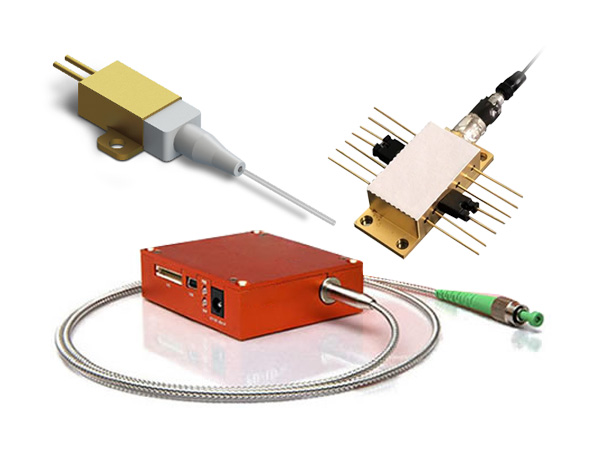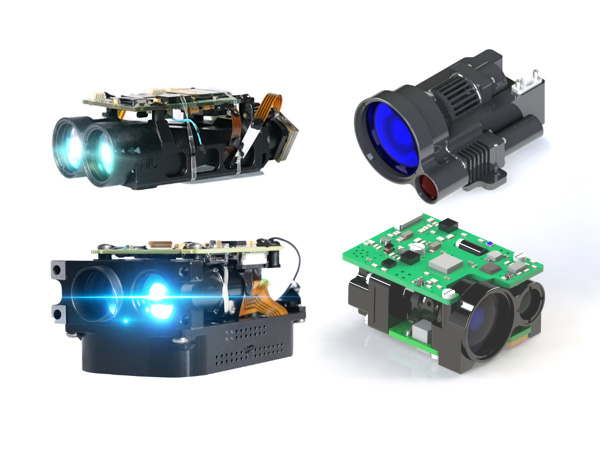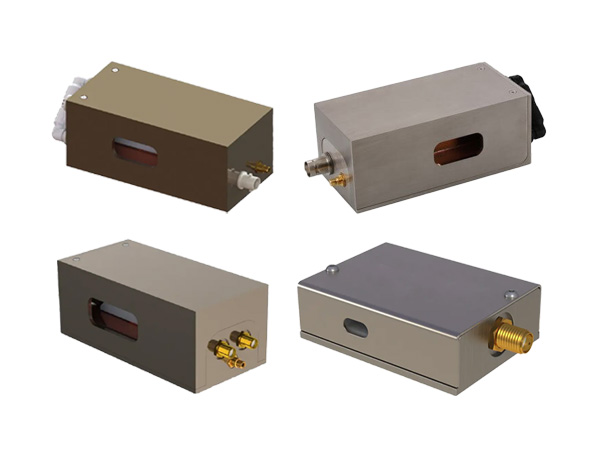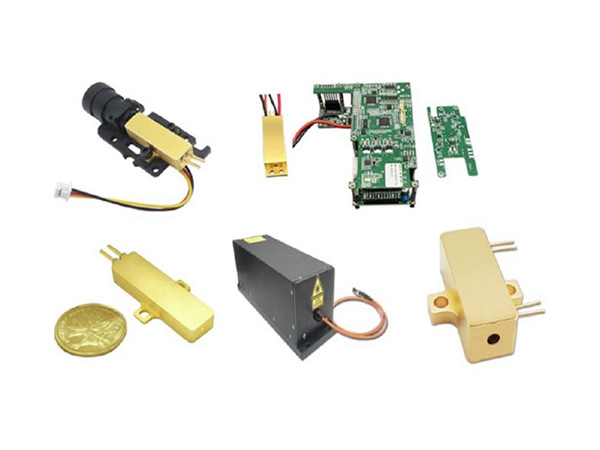Lithium Niobate (LiNbO₃) Optical Modulators in Optical Communication Systems

Lithium niobate (LiNbO₃) optical modulators exhibit significant advantages in high-speed, high-reliability applications. Below is a detailed analysis of their key strengths:
1. High Modulation Speed
LiNbO₃ possesses a strong electro-optic effect (Pockels effect) with a large electro-optic coefficient (30 pm/V), enabling ultrafast response speeds and modulation rates exceeding tens of GHz to over 100 GHz.
Applications: Supports 100Gbps, 400Gbps, and higher-speed optical communication systems (e.g., data center interconnects, 5G networks).
Comparison: Semiconductor modulators (e.g., silicon or InP) rely on carrier effects (plasma dispersion or quantum-confined Stark effect), which are limited by carrier mobility and RC time constant bottlenecks at high frequencies.
2. Low Insertion Loss (<3 dB)
Causes: Mature LiNbO₃ waveguide designs offer strong optical confinement, low material absorption (especially in the 1550 nm band), and high fiber coupling efficiency.
Advantages: Reduces optical signal attenuation, extends unamplified transmission distances, and minimizes reliance on amplifiers.
Comparison: Silicon modulators typically exhibit higher insertion losses (~5 dB) due to waveguide scattering and fiber-to-chip coupling mismatches.
3. High Extinction Ratio (>20 dB)
Mechanism: Mach-Zehnder interferometer (MZI)-based LiNbO₃ modulators convert precise phase modulation to intensity modulation, ensuring stark contrast between "0" and "1" states.
Significance: Enhances signal integrity, reduces bit error rates (BER), and supports advanced modulation formats (e.g., 64QAM).
Comparison: Electro-absorption modulators (EAMs) typically achieve lower extinction ratios (10 dB) and are sensitive to temperature and wavelength variations.
4. Superior Linearity
Basis: The Pockels effect provides intrinsic linearity, ensuring strict proportionality between input electrical signals and output optical parameters (phase/intensity), thereby minimizing harmonic distortion.
Importance: Enables analog signal transmission and high-order digital modulation with reduced signal processing complexity.
Comparison: Semiconductor modulators exhibit nonlinear responses due to carrier concentration fluctuations, requiring additional pre-distortion compensation circuits.
5. High Optical Damage Threshold (1 GW/cm²)
Material Property: LiNbO₃ crystals exhibit exceptional resistance to optical damage, even under high-power inputs (e.g., EDFA-amplified signals), making them ideal for long-haul transmission and LiDAR systems.
Comparison: Polymer modulators suffer from thermo-optic effects, while silicon devices face losses due to two-photon absorption at high power levels.
6. Polarization Independence
Design Optimization: Crystal cuts (e.g., Z-cut) or waveguide engineering (e.g., annealed proton exchange) ensure equivalent modulation efficiency for both TE and TM modes.
Advantages: Simplifies system design by eliminating dynamic polarization control, reducing costs and complexity.
Comparison: Semiconductor modulators are polarization-sensitive, necessitating polarization diversity or polarization-maintaining fibers.
Comprehensive Comparison and Industry Applications
Silicon Photonics Modulators: They have the advantages of CMOS compatibility and high integration degree. However, in terms of speed (usually less than 50 GHz) and linearity, they are inferior to lithium niobate modulators. They are suitable for short-distance data centers.
InP Modulators: They are suitable for optoelectronic integration, but they have high costs and large power consumption, and their extinction ratio and damage threshold are relatively low.
Lithium Niobate Modulators: With the comprehensive performance of high speed, low loss, and high reliability, they dominate in long-distance trunk networks, coherent communication, and the field of quantum optics.
Summary
Lithium niobate modulators dominate ultra-100G optical networks due to their unparalleled combination of speed, linearity, and low loss. While integration and cost remain challenges, advances in thin-film LiNbO₃ (TFLN) technology are driving miniaturization and chip-scale integration, solidifying their leadership in next-generation optical systems.
For more information on our fiber Electro-optic Modulators products, please click here.
 English
English Français
Français Deutsch
Deutsch euskara
euskara Русский язык
Русский язык Italiano
Italiano Português
Português Nederlands
Nederlands Polski
Polski Greek
Greek Lietuva
Lietuva Türkçe
Türkçe 日本語
日本語 한어
한어 中文
中文 தாமில்
தாமில் فارسی
فارسی हिंदी
हिंदी Tiếng Việt
Tiếng Việt ภาษาไทย
ภาษาไทย Pilipino
Pilipino Indonesia
Indonesia தாமில்
தாமில்





